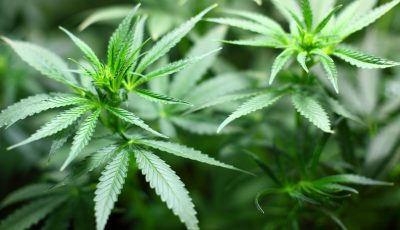C-to-F and back again
One result of Saipan’s crossroads status is that temperatures are often reported, understood, and even misunderstood in a haphazard mix of Fahrenheit and Celsius. So, quick, what’s the Fahrenheit equivalent of 26 C? Or tell me the Celsius equivalent of 120 F. Yikes, that’s a tiger of a math problem, right?
Well, no problem. We’ll tame it. I’ll show you how.
But first, let’s heed the textbook side of things just so we can note the ever-widening disparity between textbook facts and real-world practicality.
The textbook formula we learn in school is that Fahrenheit equals nine-fifths Celsius plus 32 degrees. From the looks of things, this formula doesn’t help many people.
For one thing, many people can’t remember it, and, even if they do remember it, or even if they look it up, they can’t really use it easily. Furthermore, if you want to do a quick-and-dirty mental approximation, who wants to multiply something by nine-fifths? Talk about awkward. It gives me a headache just thinking about it.
Having set the stage for this sorry situation, I’ll unveil the magic rule of thumb for an approximate conversion from Celsius to Fahrenheit. Here it is: “Double it and add 30.”
That’s all there is to it. Sure, it’s easy to remember. And, better yet, it’s easy to do.
Let’s pick up the examples I started off with and test-fly them.
We’ll start with 26 C. What’s the Fahrenheit equivalent? First we double the 26 C; doubling 26 gives us 52. Then we add 30; this gives us 82. And then, well, there is no other then, since we’re already done: 26 C equals (approximately) 82 F.
If we reach for a calculator and grind out the exact answer, we’ll come up with 78.8 F. So, in this case, our approximation is off by about three degrees. For casual use, like picking which clothes to pack for a trip, this is certainly close enough.
We can reverse the process and convert Fahrenheit to Celsius. Let’s say that you grew up with the metric system, and your American pal tells you that it’s going to be a scorching 120 F in Death Valley. You’d like to put that in more familiar terms, namely, Celsius, to get a better feel for things. Is your friend just a whiner, or does he have a point?
Here we’ll just run the rule backwards, since we’re going F-to-C instead of C-to-F. Instead of doubling it and adding 30, we subtract 30 and then cut it in half.
So we’ll take 120 F and subtract 30; this gives us 90. Then we cut 90 in half; this gives us 45. Thus, we see that 120 F is approximately 45 C. Yeah, that’s doggone hot. Tell your friend to move to Saipan, where the temperatures are usually in the, uh, more mild 30’s.
If we grab the calculator again for a reality check, we see that the exact answer is about 48.9 C. Again, close enough for casual use.
Like most rules of thumb, this one has a limited context for its application, which, here, is the range of temperatures that we usually encounter at the pedestrian level. By contrast, other contexts might produce errors that are too large to be acceptable.
Now we get to the buried treasure: Our rule of thumb can help us employ the actual formula. Maybe you care. Maybe you don’t. But for those who do, let’s take a look.
You’ll recall that pesky nine-fifths multiplier from the actual formula. If you’ve got a head for numbers, you’ll recognize that nine-fifths is the same at 1.8. Hey, that’s pretty close to the “double it” multiplier of two, right? Yep. And the 32 in the exact formula is pretty close to the 30 used in the rule of thumb, right? Yep, again. Once you know “double it and add 30,” it’s not too hard to change it to “multiply it by 1.8 it and add 32,” and this is, indeed, the actual formula.
We can test this by noting that water boils at 100 C, which is the same as 212 F; this is a famous equivalence and a common schoolbook fact. Let’s work the actual formula from the 100 C mark. We’ll multiply 100 by 1.8; this gives us 180. We’ll then add 32; this gives us 212. So our answer is 212 F. This checks out perfectly. Ain’t life grand? Our rule of thumb made it easy to shift our minds to the actual formula so we could do the more precise conversion.
No matter how hot it gets under the sun, knowing how to “double it and add 30” can make you look like a very cool cat.



























